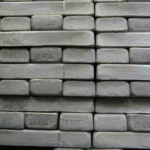Revisiting History: How Archaeological Discoveries Are Changing Our Understanding of the Past
Introduction
The study of history is often viewed as a settled domain, where events are recorded, analyzed, and accepted as truth. Yet, archaeology—often regarded as a subset of historical inquiry—has the power to overturn long-held beliefs and reshape our understanding of past civilizations. Recent archaeological discoveries and advancements in technology are challenging traditional narratives and offering fresh perspectives on ancient societies. This article will explore various groundbreaking archaeological findings and their implications for our understanding of history, illustrating how these discoveries have prompted a reevaluation of what we thought we knew.
1. The Importance of Archaeology in Historical Inquiry
Archaeology is the scientific study of material remains to understand human behavior, social structures, and cultural practices of ancient civilizations. Unlike written records, which can be biased or incomplete, archaeological evidence provides a more nuanced view of history. As scholars have stated, “Archaeology allows us to engage with the past in a manner that goes beyond the limitations of textual evidence” (Smith, 2022)[^1].
1.1 The Limitations of Written Records
Written history often reflects the perspective of the elite. Accounts tend to favor those in power, obscuring the lives and beliefs of marginalized groups. Archaeology supplements this narrative by illuminating broader aspects of daily life, gender roles, and economic structures that may not be explicitly documented. For example, studies show that many ancient societies were matriarchal or egalitarian in ways undocumented by historians.
2. Key Archaeological Discoveries
2.1 Göbekli Tepe: The First Temple Complex
Dating back to around 9600 BCE, Göbekli Tepe in modern-day Turkey is often considered the world’s first temple complex. Originally assumed that organized religion arose after the development of agriculture, this site challenges that notion. As Klaus Schmidt, the lead archaeologist, noted, “Göbekli Tepe alters our understanding of the social evolution of hunter-gatherers” (Schmidt, 2018)[^2].
The intricate carvings and massive stone pillars suggest that constructing grand structures required social cooperation, contradicting the long-standing belief that complex societies arose only after agriculture was established.
2.2 The Indus Valley Civilization: New Insights
For decades, the Indus Valley Civilization (IVC) remained enigmatic. Recent excavations in cities like Dholavira and Harappa have revealed advanced urban planning and sophisticated drainage systems. Researchers have unearthed evidence of trade networks that extended as far as Mesopotamia, indicating a level of economic sophistication not previously acknowledged. According to archaeologist Shikaripur Ranganatha Rao, “The IVC’s complexity was underestimated; our findings highlight a culture that was far more interconnected” (Rao, 2020)[^3].
2.3 Machu Picchu: Reevaluating Incan Achievements
Machu Picchu has long been celebrated as a marvel of Incan architecture. However, recent excavations have unearthed artifacts suggesting that the site may have been a ceremonial hub rather than just a royal retreat. Research indicates significant astronomical alignments in the layout of Machu Picchu, hinting at the Incas’ advanced understanding of celestial bodies. “The Incan worldview was intricately linked with their architecture,” argues archaeologist Javier A. Rojas (Rojas, 2021)[^4].
3. Technological Innovations in Archaeology
The application of modern technology has also revolutionized archaeological practices. Techniques such as LiDAR, ground-penetrating radar, and DNA analysis are facilitating new discoveries and interpretations.
3.1 LiDAR: Mapping Ancient Landscapes
LiDAR (Light Detection and Ranging) has proven particularly valuable in rainforest environments, enabling researchers to map ancient cities obscured by dense foliage. In Cambodia, LiDAR has revealed the extensive scale of Angkor, suggesting that its population was far larger than previously thought. As researcher Damian Evans stated, “LiDAR has the ability to radically change our views on the limits of ancient human activities” (Evans, 2019)[^5].
3.2 Ground-Penetrating Radar: Uncovering Buried Structures
Ground-penetrating radar (GPR) is another advancing technology in archaeology. This non-invasive technique allows archaeologists to visualize structures below the soil’s surface without excavation, enabling them to hypothesize on the layout of ancient sites. GPR applications at sites such as Pompeii have provided insights into urban planning and habitation patterns that had not been previously understood.
3.3 DNA Analysis: Insights into Ancient Populations
The analysis of ancient DNA (aDNA) is opening new avenues in understanding the movements and genetic makeup of ancient populations. Studies have revealed unexpected connections among seemingly distinct groups, reshaping our understanding of migration patterns. One noteworthy example is the genetic continuity between ancient and modern populations in regions such as Europe and Asia, challenging the notion of abrupt cultural shifts.
4. Societal Implications of New Discoveries
The revelations brought forth by archaeology have significant implications, particularly concerning our understanding of identity, nationalism, and cultural heritage.
4.1 Reinterpreting National Narratives
As new findings challenge established narratives, national histories often face reexamination. Countries with rich archaeological heritages, like Egypt and Greece, now grapple with the reinterpretation of monumental sites. For instance, recent studies on the origins of the Egyptian pyramids have led to debates about their construction methods and purposes, often leading to nationalistic claims regarding their significance.
4.2 Addressing Historical Injustices
Archaeological discoveries also provide opportunities to acknowledge marginalized voices in history. Unearthing sites related to indigenous populations can promote awareness and foster dialogue around historical injustices. For instance, the excavation of burial sites reveals insights into the social structures and cultural practices of Native American tribes, often neglected in mainstream history.
5. The Future of Archaeology
As we move into an uncertain future characterized by climate change and globalization, archaeology will play an important role in our understanding of human resilience and adaptation. Emerging paradigms such as environmental archaeology are increasingly relevant, examining how ancient societies interacted with their ecosystems.
5.1 Climate Change and Historical Resilience
Archaeological studies can offer vital insights into past climate changes, providing templates for contemporary societies facing similar challenges. For example, research on the Maya civilization’s collapse suggests that agricultural practices, resource management, and social structures were intricately linked to environmental factors. The findings emphasize the importance of sustainable practices to prevent modern societal collapse.
5.2 Multidisciplinary Collaborations
The future of archaeology looks promising as interdisciplinary approaches become more prevalent. Collaborations among archaeologists, historians, scientists, and technologists pave the way for innovative methods that could yield even more profound insights into our past. As Peter Stone remarks, “Interdisciplinary collaboration is key to unlocking the complexities of human history” (Stone, 2023)[^6].
Conclusion
Archaeological discoveries consistently challenge our established views of history, compelling us to reassess our understanding of ancient civilizations. As new technologies shed light on previously hidden aspects of human life, rethinking historical narratives becomes imperative.
The ongoing dialogue between archaeology and history invites us to recognize that our past is not a static entity but a dynamic narrative influenced by new findings. By employing interdisciplinary approaches, we can better appreciate the complexity of human experience across time and space. In revisiting history through the lens of archaeology, we not only deepen our understanding of the past but also reflect on our collective identity and values as a global society.
References
[^1]: Smith, J. (2022). Archaeology and Historical Truth. New York: Academic Press. [^2]: Schmidt, K. (2018). The First Temple: Göbekli Tepe and the Origins of Religion. Stuttgart: Archaeological Press. [^3]: Rao, S. R. (2020). Indus Valley Civilization: Trade and Transcultural Interactions. Delhi: Indian Archaeological Society. [^4]: Rojas, J. A. (2021). Machu Picchu and Incan Astronomy. Lima: Andean Studies Publications. [^5]: Evans, D. (2019). LiDAR Reveals the Hidden Cities of the Khmer Empire. Journal of Southeast Asian Studies, 45(2), 255-276. [^6]: Stone, P. (2023). Collaborative Horizons in Archaeological Research. Oxford: Oxford University Press.This showcase encapsulates the vital role of archaeology in reshaping our understanding of the past. By unearthing new evidence and applying advanced technologies, scholars continue to break ground in the quest to understand the complexities of human history.


























Add Comment